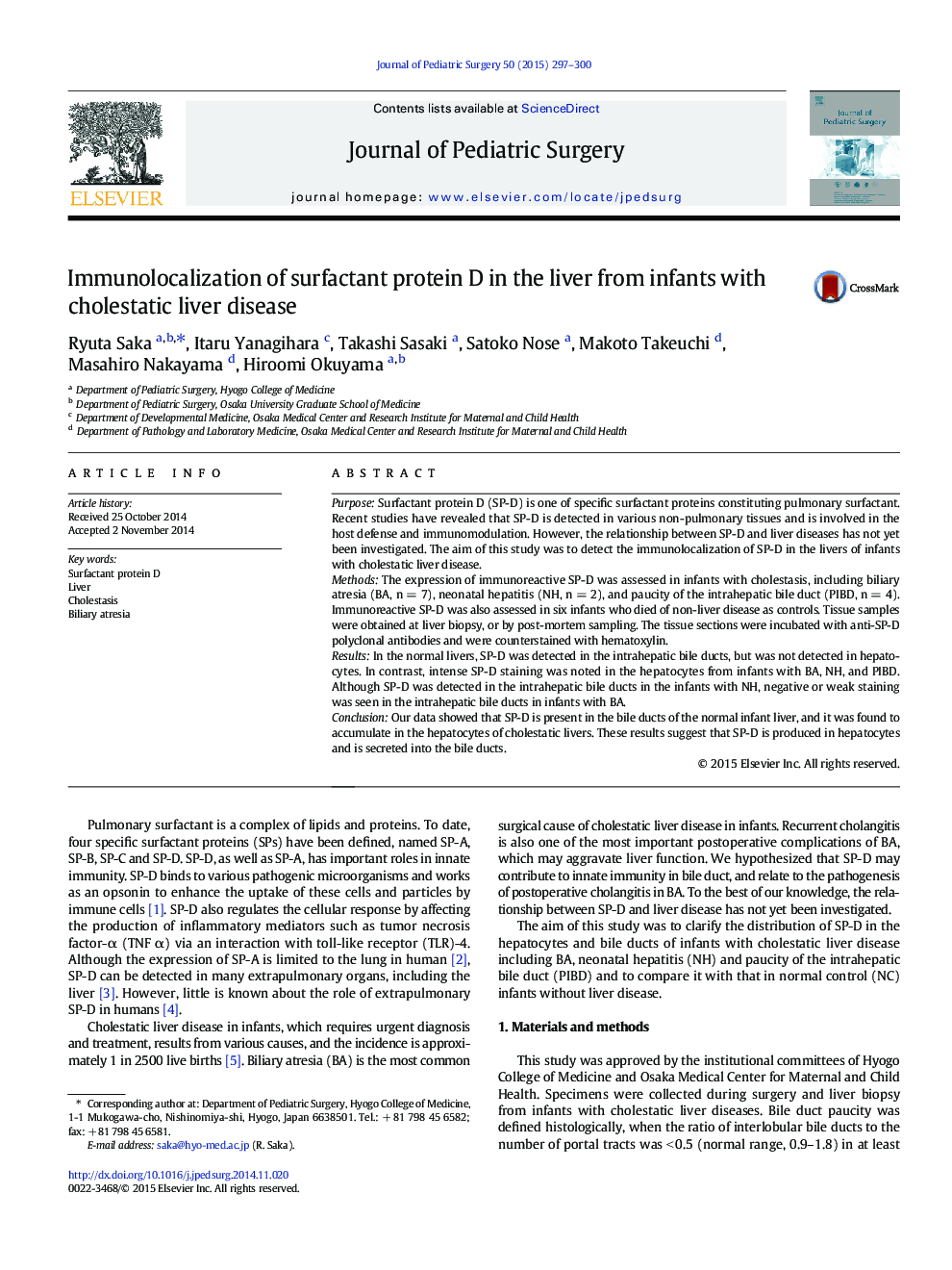| Article ID | Journal | Published Year | Pages | File Type |
|---|---|---|---|---|
| 4155640 | Journal of Pediatric Surgery | 2015 | 4 Pages |
PurposeSurfactant protein D (SP-D) is one of specific surfactant proteins constituting pulmonary surfactant. Recent studies have revealed that SP-D is detected in various non-pulmonary tissues and is involved in the host defense and immunomodulation. However, the relationship between SP-D and liver diseases has not yet been investigated. The aim of this study was to detect the immunolocalization of SP-D in the livers of infants with cholestatic liver disease.MethodsThe expression of immunoreactive SP-D was assessed in infants with cholestasis, including biliary atresia (BA, n = 7), neonatal hepatitis (NH, n = 2), and paucity of the intrahepatic bile duct (PIBD, n = 4). Immunoreactive SP-D was also assessed in six infants who died of non-liver disease as controls. Tissue samples were obtained at liver biopsy, or by post-mortem sampling. The tissue sections were incubated with anti-SP-D polyclonal antibodies and were counterstained with hematoxylin.ResultsIn the normal livers, SP-D was detected in the intrahepatic bile ducts, but was not detected in hepatocytes. In contrast, intense SP-D staining was noted in the hepatocytes from infants with BA, NH, and PIBD. Although SP-D was detected in the intrahepatic bile ducts in the infants with NH, negative or weak staining was seen in the intrahepatic bile ducts in infants with BA.ConclusionOur data showed that SP-D is present in the bile ducts of the normal infant liver, and it was found to accumulate in the hepatocytes of cholestatic livers. These results suggest that SP-D is produced in hepatocytes and is secreted into the bile ducts.
